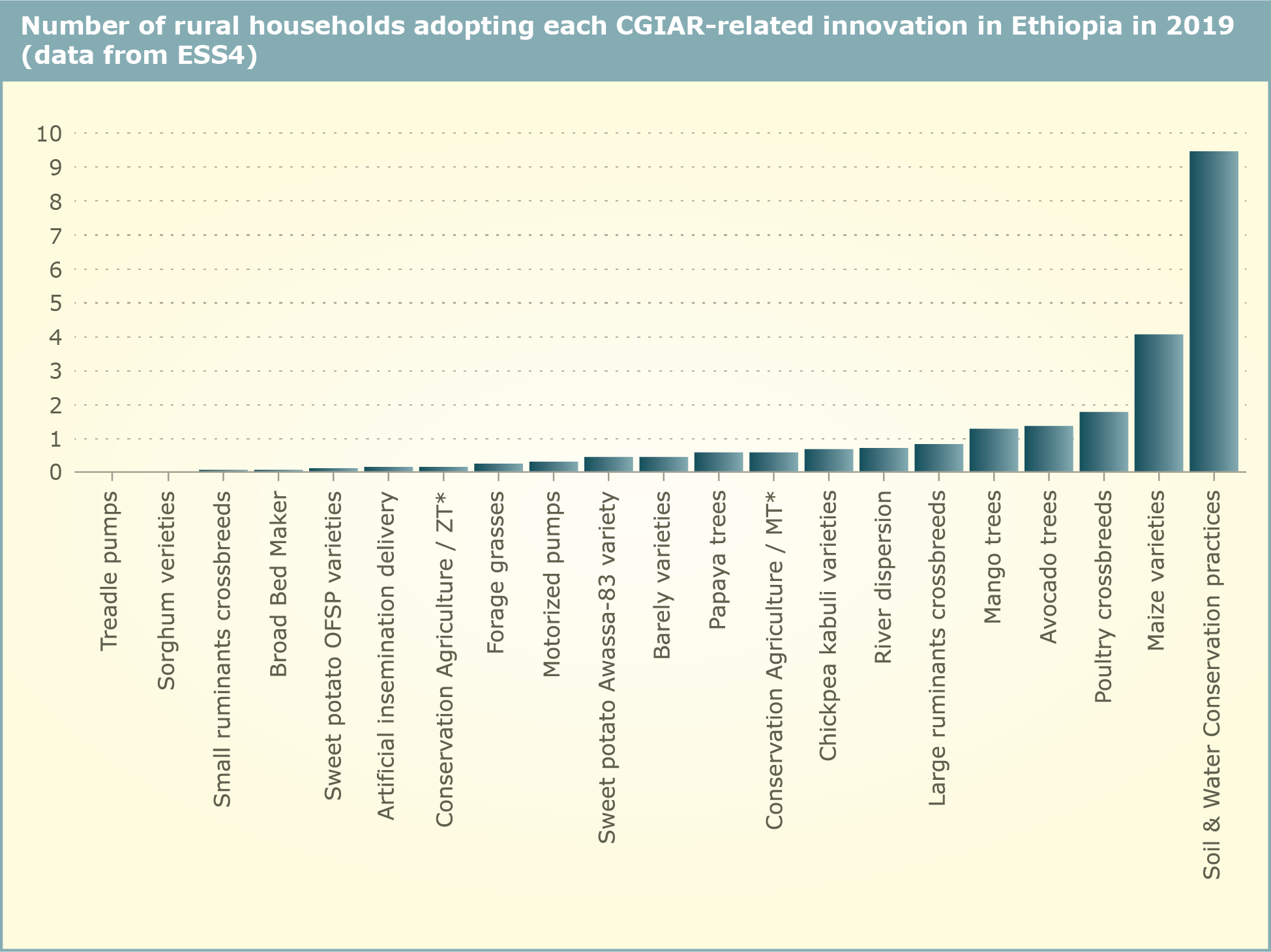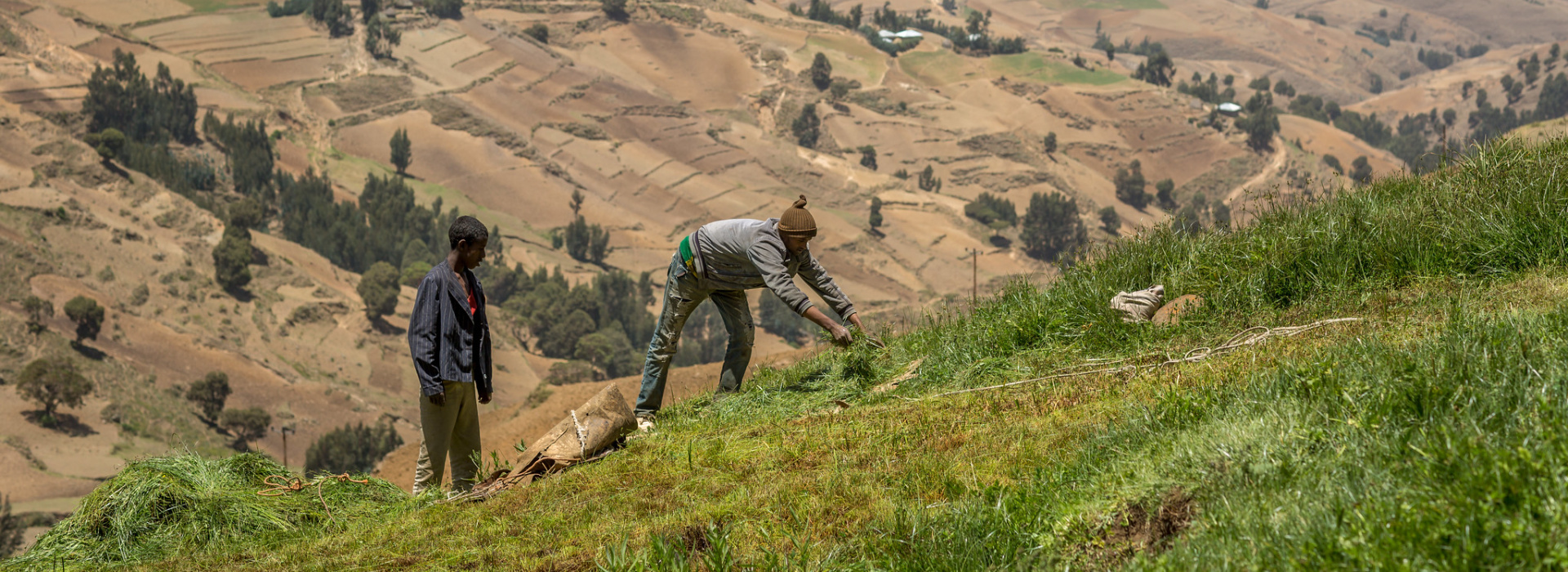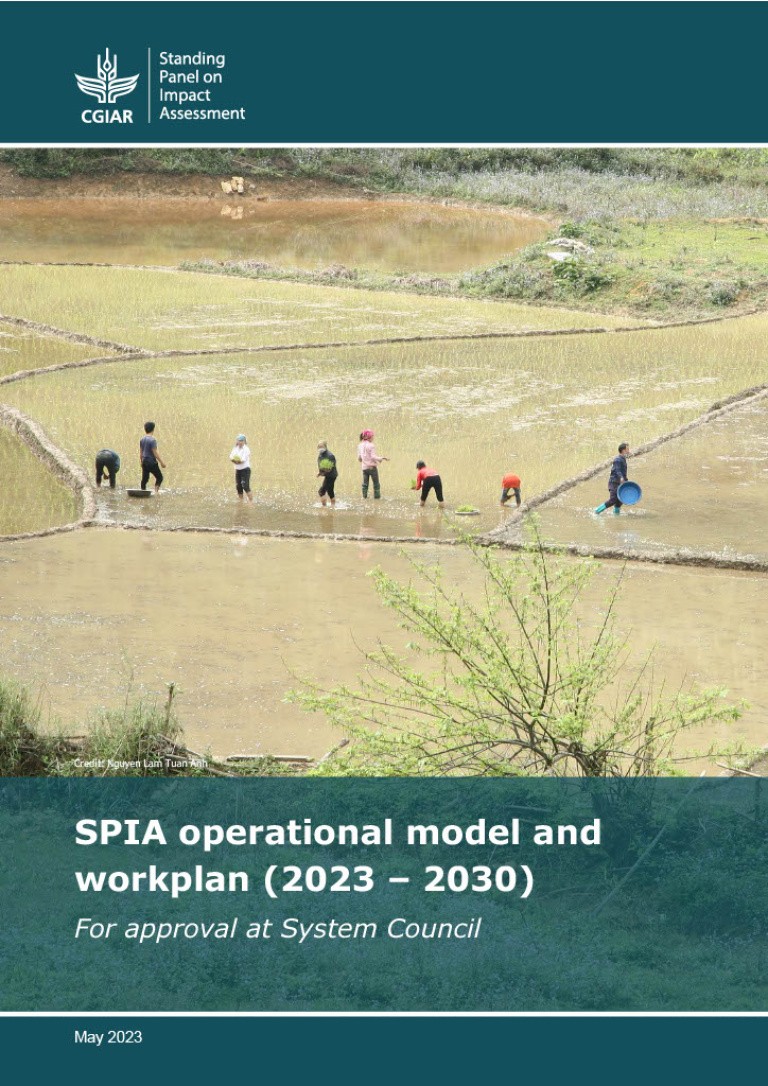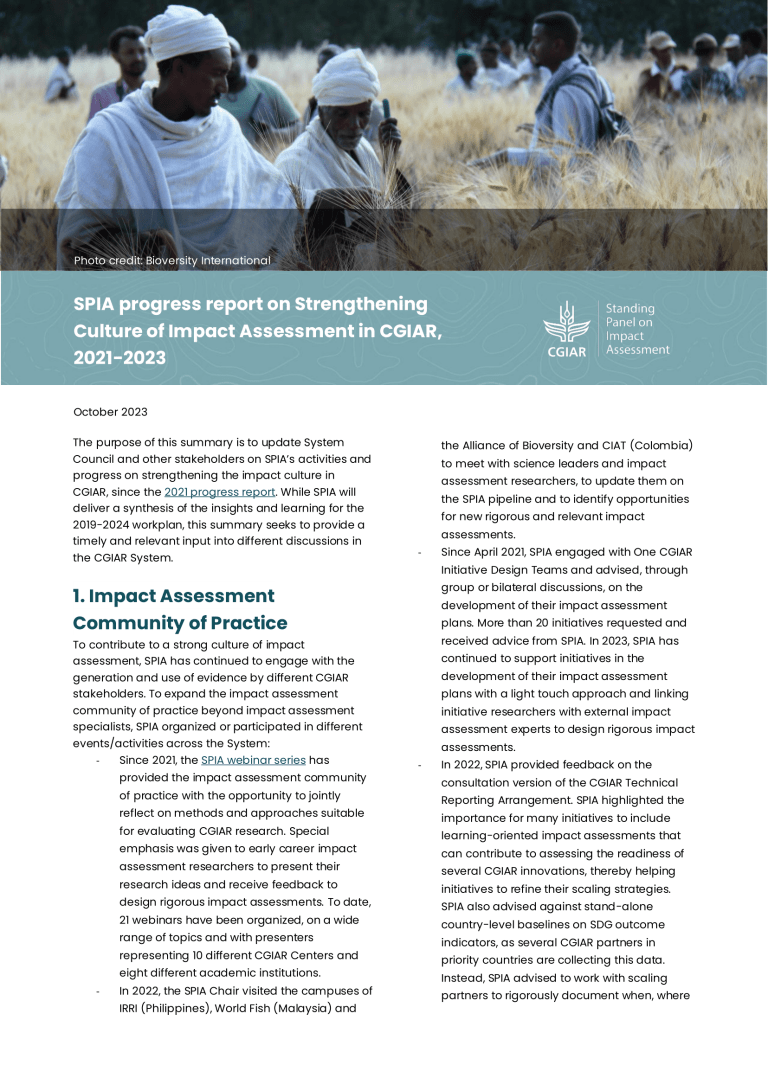Taking a Country-Level Approach to Documenting Diffusion of Agricultural Innovations in Ethiopia
Shining a Brighter Light: Comprehensive Evidence on Adoption and Diffusion of CGIAR-Related Innovations in Ethiopia is a new report that focuses on the success of agricultural innovations in the last 20 years in Ethiopia, in particular those linked to CGIAR. It is the culmination of work to develop and pilot, a comprehensive, country-level framework, led by the Standing Panel on Impact Assessment (SPIA)*, working closely with partners at the Ethiopian Central Statistics Agency (CSA), and the World Bank Living Standards Measurement Study team (LSMS).
“We selected Ethiopia to pilot our country-level approach as it is a hotspot of CGIAR research—almost all CGIAR centers are represented there,” explains Karen Macours, SPIA Chair, and Professor at the Paris School of Economics and Researcher at the French National Research Institute for Agricultural, Food, and Environment. “We included innovations in a nationally representative household survey—the Ethiopian Socioeconomic Survey—which has a strong focus on agriculture. This allowed us to document the extent to which innovations have been scaled up over time”.
Better Data Through Sustained Partnerships
The researchers started by systematically documenting innovations to which CGIAR research had contributed, through desk reviews, and interviews with CGIAR scientists and staff from the national agricultural research system and government agencies. This resulted in a stocktaking exercise covering 52 CGIAR-related innovations—documented over the 1999–2019 period—and 26 claims of policy influence.

The next step was to develop data collection protocols for a subset of these innovations to be integrated into nationally representative household surveys. This allowed the researchers to quantify the adoption and diffusion of innovations across the domains of animal agriculture, crop germplasm improvement, and natural resource management. In addition, samples of plant tissue were collected for DNA fingerprinting, to estimate national adoption rates and the number of households adopting barley, maize, and sorghum varieties that contain CGIAR-related germplasm. “There have previously been a number of pilot studies, but this is the first time DNA fingerprinting of varieties across multiple crops has been successfully integrated into a large-scale household survey where the data are open access for all to use,” says James Stevenson, Senior Researcher, SPIA.
None of this would have been possible without partnering with the World Bank LSMS team and the Ethiopian Central Statistical Agency (CSA). Gero Carletto, World Bank Lead Economist and Manager of the LSMS team notes: “The long-standing partnership between the LSMS team and SPIA, working closely with local counterparts, is a powerful example on how we can leverage our respective strengths to generate policy impact at the country level by improving the underlying data through methodological innovation and research.”
Biratu Yigezu, Director General of the Ethiopian Central Statistical Agency describes the partnership with SPIA: “The collaborative pilots that were experimented in the Ethiopian Socioeconomic Survey created enormous learning opportunities for CSA that resulted in a rigorous and informed scale-up of more accurate measures of farmers’ adoption of improved seed varieties."
Quantifying ‘Reach’ of the CGIAR System at Country-Level
The national-level data show that CGIAR-related agricultural innovations reached between 4 and 11 million households by 2019.
“We can say that CGIAR has potentially reached 11 million households across Ethiopia,” stresses Frederic Kosmowski, Scientist, SPIA. “The upper figure includes innovations for which the contribution from CGIAR research may be quite indirect and difficult to attribute. Our low, conservative estimate of 4 million households is limited to those innovations where the innovation could be accurately measured and the link to CGIAR research contributions is clear. You can find the full details behind those numbers, as well as the context, in the report. We also recognize that not all research leads to a specific innovation, and that not all innovations can be directly attributed to CGIAR.”
Interestingly, the three innovations with the largest reach, as measured with the current data, result from different types of CGIAR research efforts: Natural resource management and policy research; crop breeding; and livestock research. Moreover, different innovations reach different types of farming households and regions. Both findings arguably underscore the value of CGIAR as a system.
Deepening Our Understanding of Change Processes

Note: This graph includes only innovations measured within the ESS surveys. It does not include wheat or beans, for which adoption estimates from other sources are available. ZT = zero tillage; MT = minimum tillage. Y axis in millions of households. (Estimates based on ESS4, with exception of Kabuli chickpea and Broad Bed Maker, which were measured in ESS3).
The approach used also means that researchers can look behind the national-level statistics to better understand which farmers are adopting these innovations, their characteristics, and geographic spread across the country. Professor Macours explains, “These datasets have rich data on the socioeconomic characteristics of the farming household, so we can see whether there are patterns in terms of kinds of households and communities that are able and interested to access each agricultural innovation.” She concludes, “Having these datasets in the public domain means that they can be repurposed for all kinds of deeper analyses – and they become all the more valuable as our Ethiopian Central Statistics Agency colleagues return to reinterview the same households over the coming years.”
Read the Report
Download the 2-page brief
*Within CGIAR, the Standing Panel on Impact Assessment (SPIA) has a mandate to expand and deepen evidence on the impact of CGIAR research investments and their potential to reduce poverty, enhance food and nutrition security, and improve natural resources and ecosystem services.



